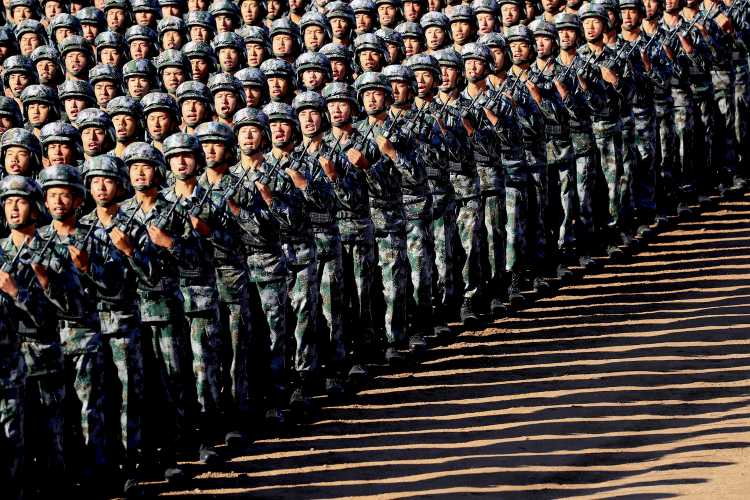
On May 12 2025, China’s State Council released a landmark White Paper titled National Security in the New Era. This is the first such document focused exclusively on national security—marking a significant moment in Beijing’s evolving strategy to frame its internal vulnerabilities and external ambitions. Unlike the United States, which periodically publishes its National Security Strategy in public view, China rarely articulates its national security doctrine explicitly. White Papers, therefore, become windows into the strategic mindset of Chinese policymakers.
This particular release comes at a precarious time. At home, the economy is faltering, raising alarms about social stability. Abroad, China faces intensifying geopolitical rivalry with the United States—particularly in the form of punitive tariffs and restrictions on technology transfer. Simultaneously, Beijing is working hard to burnish its image as a dependable global power. The White Paper seeks to accomplish three things: redefine China’s security narrative, critique the West—especially the US—and project calm strength to foreign investors and regional partners.
READ I Harvard visa ban: America turns guns on its own crown jewel
White papers as strategic signalling
While technically official policy documents, China’s White Papers are often crafted for dual audiences. Domestically, they signal the direction of governance. Internationally, they serve as instruments of political messaging. At the heart of this paper lies a familiar foil: the United States. It frames Washington as a revisionist actor bent on undermining global and regional stability, while casting China as a stabilising force committed to constructive global engagement.
The guiding principle is Xi Jinping’s long-standing doctrine of ‘comprehensive national security’—a concept introduced in 2013 that views all spheres of public life, from culture to cyberspace, as integral to national resilience. This holistic view stands in sharp contrast to the West’s more segmented approach to defence and diplomacy. Implicitly, the Paper critiques American dominance while signalling Beijing’s readiness to assume a leadership role in global governance.
Selling safety amid strategic uncertainty
Perhaps most striking is the Paper’s claim that “China is the safest country in the world”—a bold reassurance aimed at investors wary of growing state control and the country’s inward economic pivot. The message is calculated: despite decoupling pressures and tighter domestic regulations, China remains open for business. This reassurance comes at a time when international companies are reassessing their exposure to the Chinese market, especially following new regulations on data security and capital movement.

There is also a geopolitical subtext. As the Trump administration’s renewed tariff barrage unsettles global markets, Beijing is positioning itself as a stable partner for countries caught in the crossfire. The White Paper’s message to such nations is clear: align with China, not with an increasingly erratic United States.
Rhetoric of defiance, signals of strain
The Paper also highlights Beijing’s combative response to US pressure. Echoes of Mao-era rhetoric—such as “China will never kneel”—suggest defiance. Yet the document’s emphasis on internal fragility and prevention betrays underlying insecurity. Chinese leaders understand that sustained economic strain could erode public support and trigger unrest.
Indeed, the White Paper acknowledges a delicate mismatch: between state capacity and public expectations. Propaganda can only go so far in sustaining morale. The leadership fears that persistent economic underperformance, if not managed carefully, could catalyse mass mobilisations. The spectre of ‘colour revolutions’—a term used to describe externally influenced regime change—looms large in Beijing’s strategic calculus, reinforcing the narrative that social control and economic revival are two sides of the same coin.
National security beyond borders
The concept of national security has also expanded beyond China’s territory. The Paper adds two new priorities: the domestic social impact of emerging technologies—such as cybercrime and AI-driven disruptions—and the security of Chinese assets and personnel overseas. Both are framed as new frontiers of security.
These additions reflect the increasing exposure of Chinese enterprises to risks abroad—particularly under the Belt and Road Initiative—and the growing challenge of managing digital threats at home. For a leadership obsessed with control, these new domains demand a recalibration of surveillance, diplomacy, and defence.
Neighbourhood as first line of defence
A particularly important section of the Paper is devoted to China’s periphery. Since Xi Jinping’s rise, the neighbourhood has taken on new strategic importance. The revival of the Central Conference on Work Relating to Neighbouring Countries in 2014, and subsequent heavy investments through the Belt and Road Initiative, illustrate this shift.
The aim is twofold: ensure political stability in China’s borderlands, often populated by ethnic minorities, and prevent US encroachment in the region. The Paper’s repeated emphasis on “Asia for Asians”—a legacy of earlier security doctrines—reaffirms Beijing’s desire to build regional solidarity on its own terms. As Washington seeks to deepen ties with nations like India, Japan, and the Philippines, China’s priority is to anchor its neighbourhood diplomatically and economically.
Ultimately, the timing of the national security white paper is as significant as its content. It attempts to bridge a growing gap between China’s international aspirations and its domestic anxieties. The leadership is acutely aware that its global ambitions cannot succeed if the economic engine falters and popular trust erodes. That duality—outward confidence, inward strain—permeates the document.
Whether China can navigate this tension remains an open question. The leadership has long mastered the art of projecting strength while managing vulnerabilities. But with economic headwinds intensifying and geopolitical fault lines hardening, the road ahead will test the very notion of comprehensive national security that this Paper so confidently champions.
Devendra Kumar, PhD, is an Associate Fellow at the Centre of Excellence for Himalayan Studies, Shiv Nadar University, Delhi NCR.
